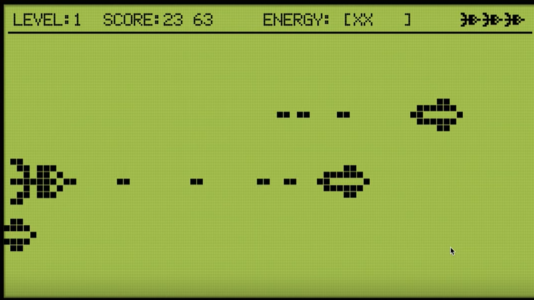F19: Space Impact
Contents
Abstract
Space Impact is a classic game from the days of the Nokia era. Our objective is to design a game in which a player is prompted to protect a spaceship from incoming missiles by moving the ship up and down. The player will also have the ability to fire back at the incoming enemies. The enemy ship's movements will speed up as the game progresses, increasing the difficulty of the game.
Example Link: https://www.youtube.com/watch?v=jh49RWFnZHk
Objectives & Introduction
Show list of your objectives. This section includes the high level details of your project. You can write about the various sensors or peripherals you used to get your project completed.
Team Members & Responsibilities
- Nikhil Pabbisetty: Wiki Page, LED Matrix Interfacing, Game Design
- Hari Haran Kura: Game Design, Github Repository
- Daniel Tsai: Game Design, PCB Design
Schedule
| Week# | Date | Task | Current Progress | Actual Completion Date |
|---|---|---|---|---|
| 1 | 10/01/2019 |
|
|
|
| 2 | 10/15/2019 |
|
|
|
| 3 | 10/22/2019 |
|
|
|
| 4 | 10/29/2019 |
|
|
|
| 5 | 11/05/2019 |
|
|
|
| 6 | 11/12/2019 |
|
|
|
| 7 | 11/19/2019 |
|
In Progress | N/A |
| 8 | 11/26/2019 |
|
In Progress | N/A |
| 9 | 12/03/2019 |
|
In Progress | N/A |
| 10 | 12/10/2019 |
|
In Progress | N/A |
Parts List & Cost
| S.No. | Parts | Seller | Quantity | Price |
|---|---|---|---|---|
| 1 | SJTwo Microcontroller | Preetpal Kang | 1 | $50 |
| 2 | RGB LED Matrix Panel - 64x64 | Sparkfun | 1 | $85 |
| 3 | PCB | JLC PCB | 1 | $10 |
Design & Implementation
The design section can go over your hardware and software design. Organize this section using sub-sections that go over your design and implementation.
Hardware Design
Our design for LED control would base on below simplified diagram, First we need a LED Matrix controller(or GPIO Extender, for reason that we only need to signal 0/1 to turn on or turn off each unit of our Matrix), IC1, as shown in the middle of the pics, then wire the input side interface to our SJ-2 Board, using the protocol we have learned in CMPE244 course (I2C or SPI) to interfacing with the controller, telling controller which unit should be update, then after receiving command from Host side(SJ-2 Board), the controller would decide which unit of LED Matrix should be turn on or which unit should be turn off. And then we can form our LED animation base on above transmission pattern.
- Note: The diagram is for 8x8 Matrix case, so for our case, we need to find a controller with at least 128 GPIOs output pin.
Hardware Interface
For our design, we would prefer the most common used buses nowadays in industry and base on what we have learned in our CMPE244 courses, it would be either I2C or SPI. It also need to be compatible with our controller, so the key factor to decide how our design would be is which one out of these two was equipped in the controller we choose.
Software Design
Show your software design. For example, if you are designing an MP3 Player, show the tasks that you are using, and what they are doing at a high level. Do not show the details of the code. For example, do not show exact code, but you may show psuedocode and fragments of code. Keep in mind that you are showing DESIGN of your software, not the inner workings of it.
Implementation
This section includes implementation, but again, not the details, just the high level. For example, you can list the steps it takes to communicate over a sensor, or the steps needed to write a page of memory onto SPI Flash. You can include sub-sections for each of your component implementation.
Testing & Technical Challenges
Describe the challenges of your project. What advise would you give yourself or someone else if your project can be started from scratch again? Make a smooth transition to testing section and described what it took to test your project.
Include sub-sections that list out a problem and solution, such as:
<Bug/issue name>
Discuss the issue and resolution.
Conclusion
Conclude your project here. You can recap your testing and problems. You should address the "so what" part here to indicate what you ultimately learnt from this project. How has this project increased your knowledge?
Project Video
Upload a video of your project and post the link here.
Project Source Code
References
Acknowledgement
Any acknowledgement that you may wish to provide can be included here.
References Used
List any references used in project.
Appendix
You can list the references you used.

